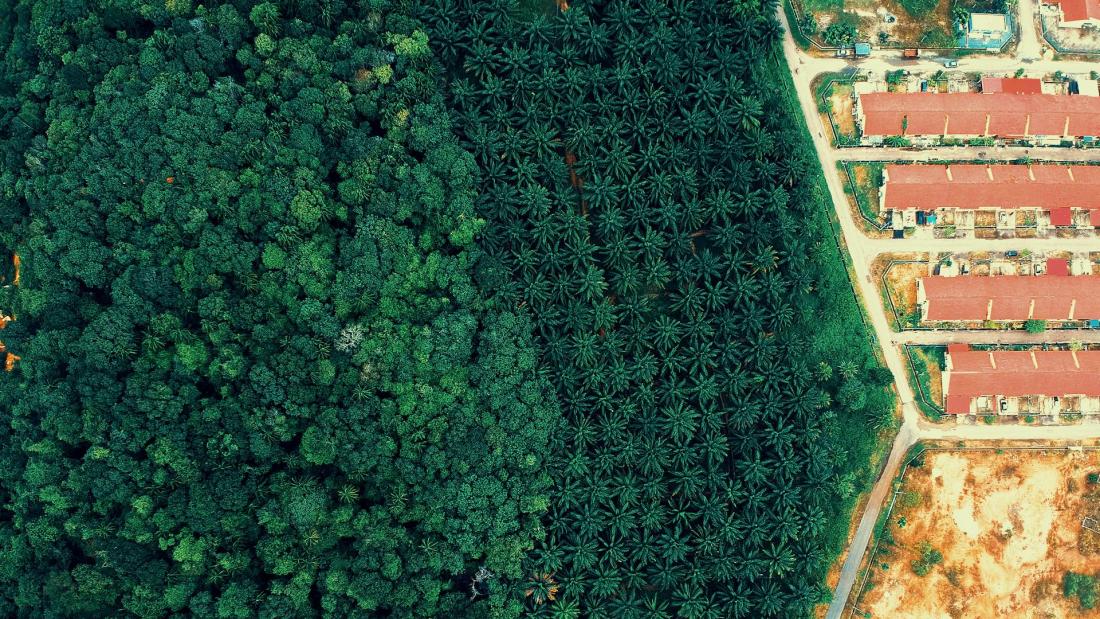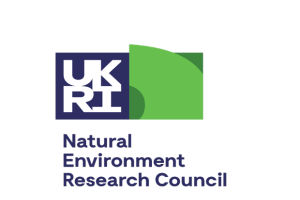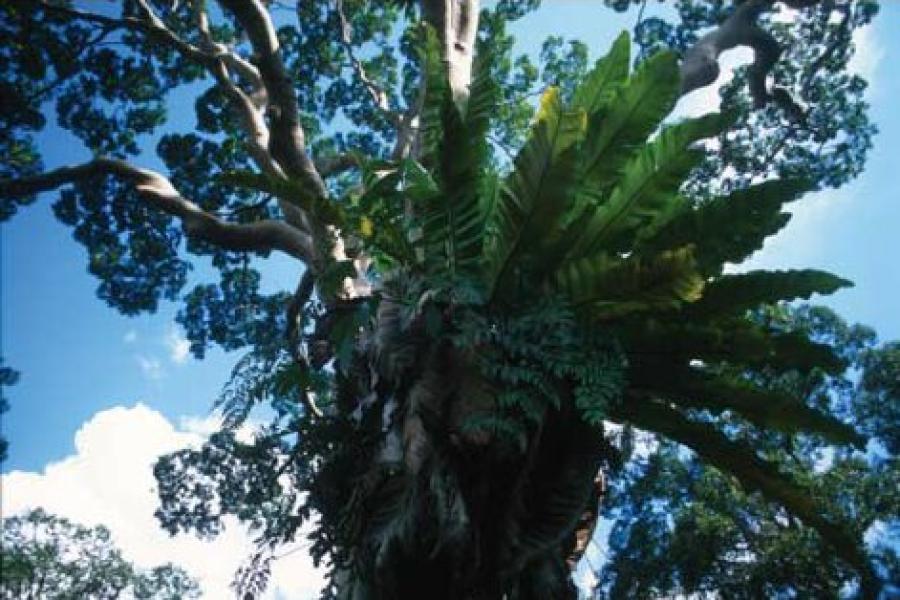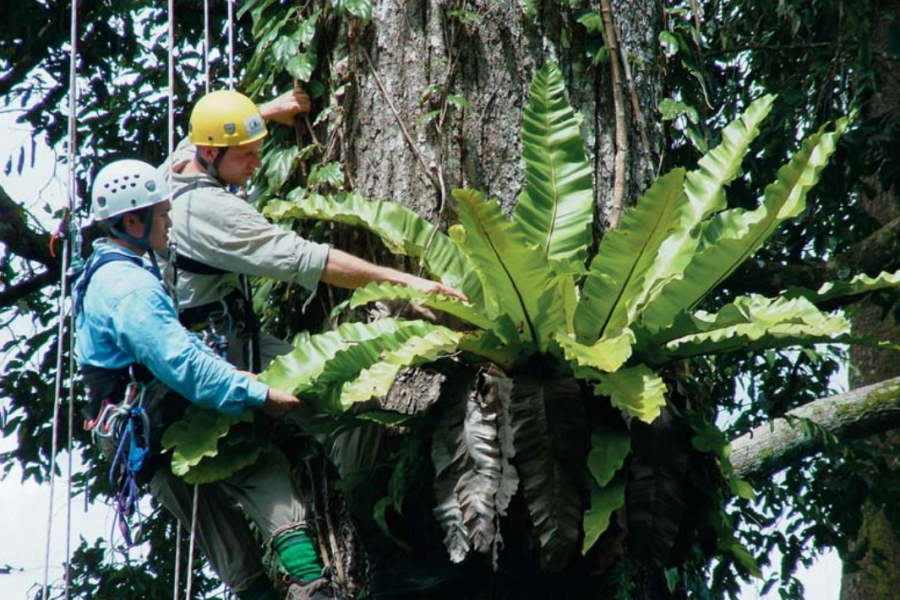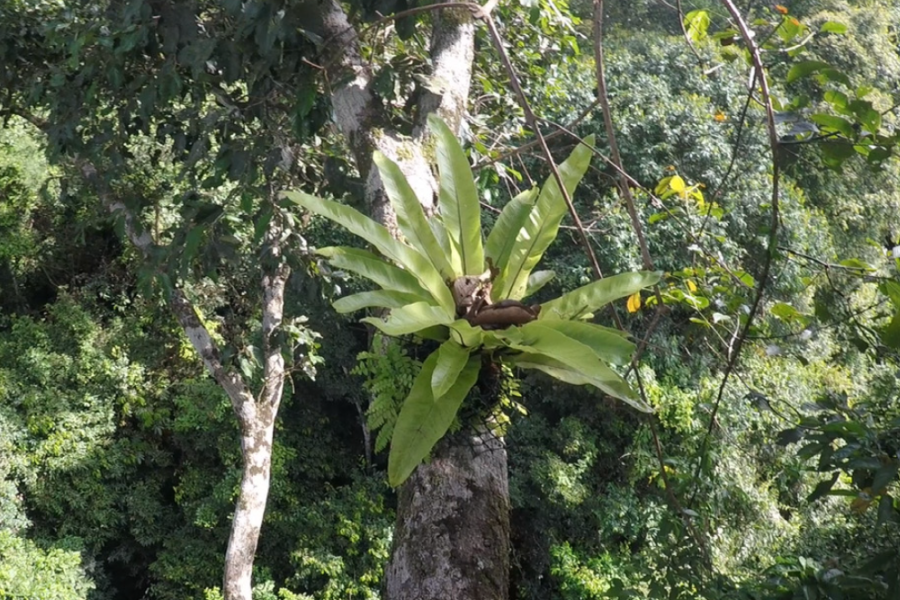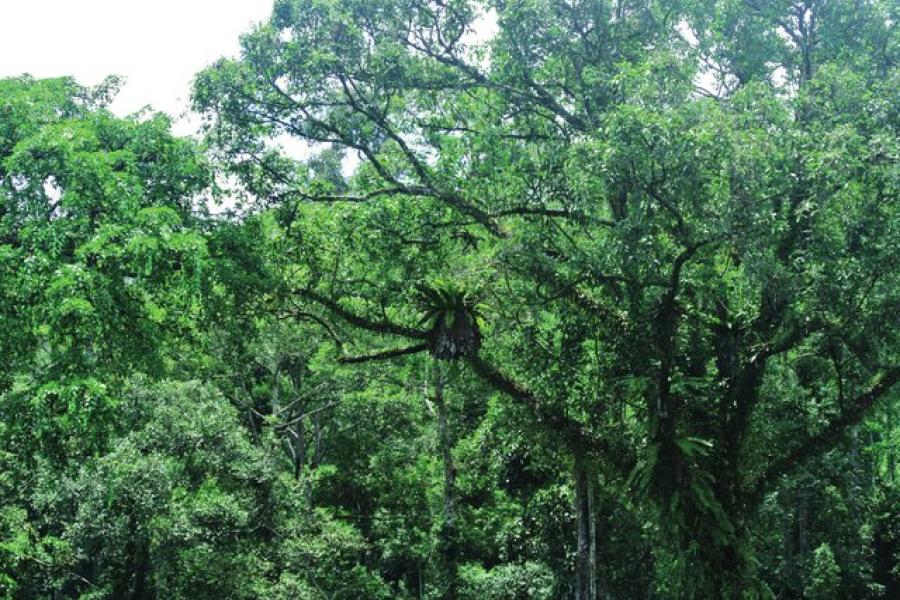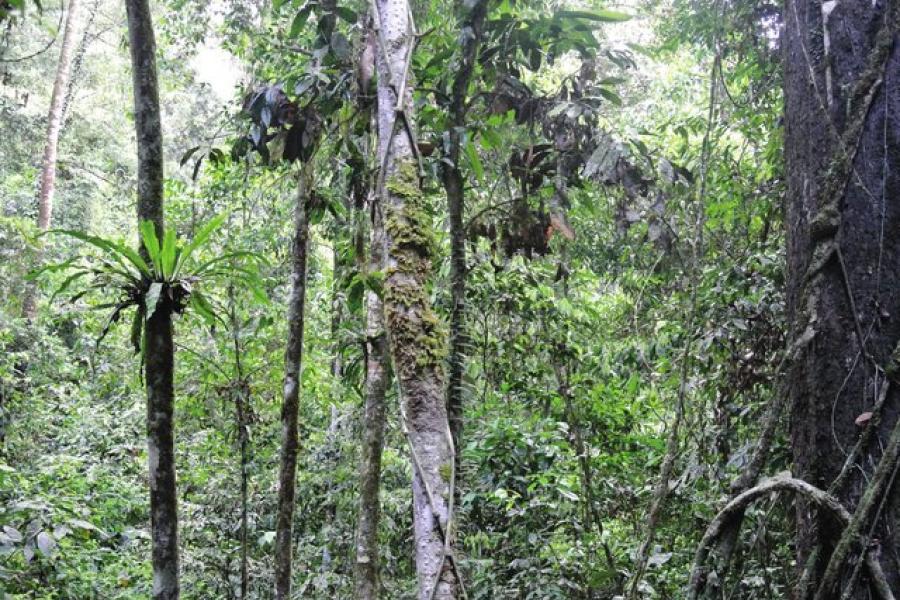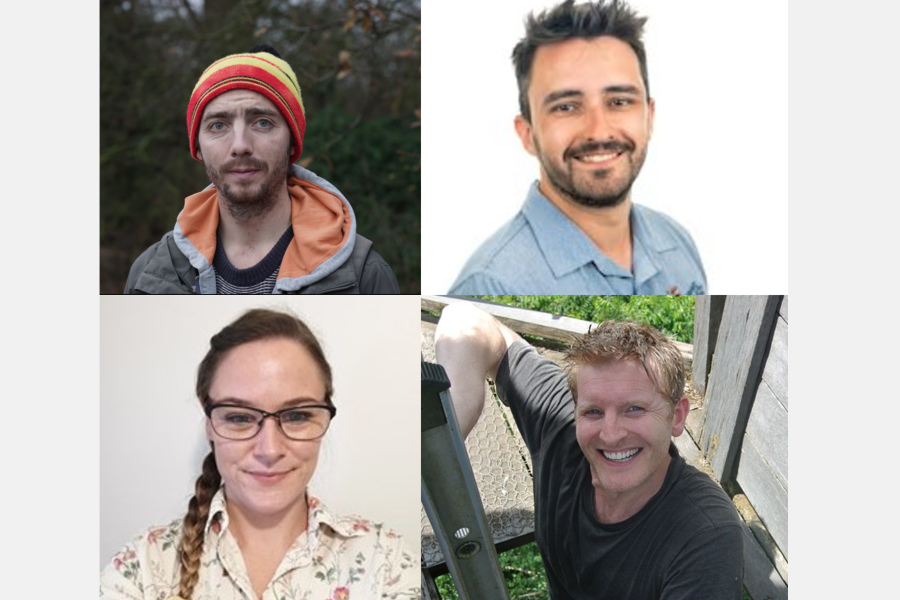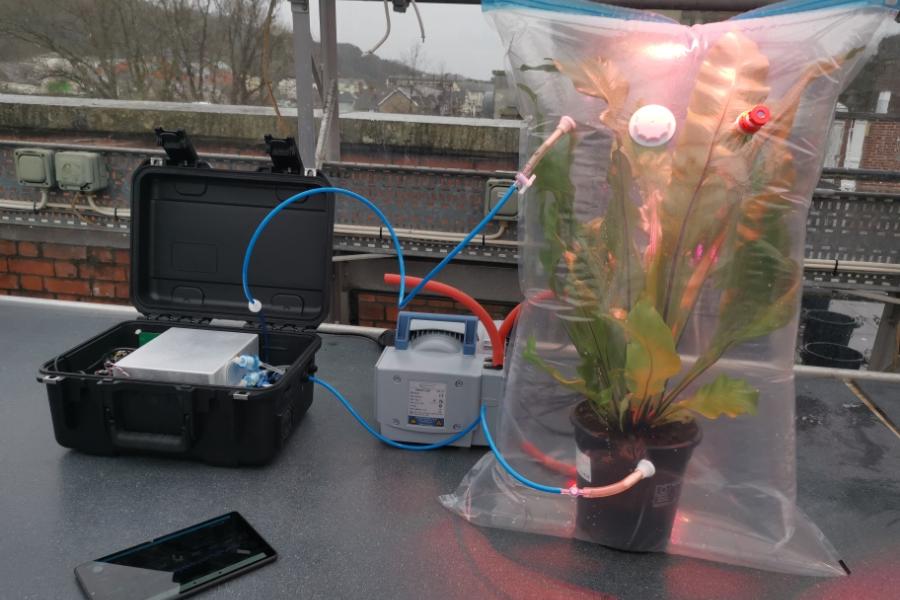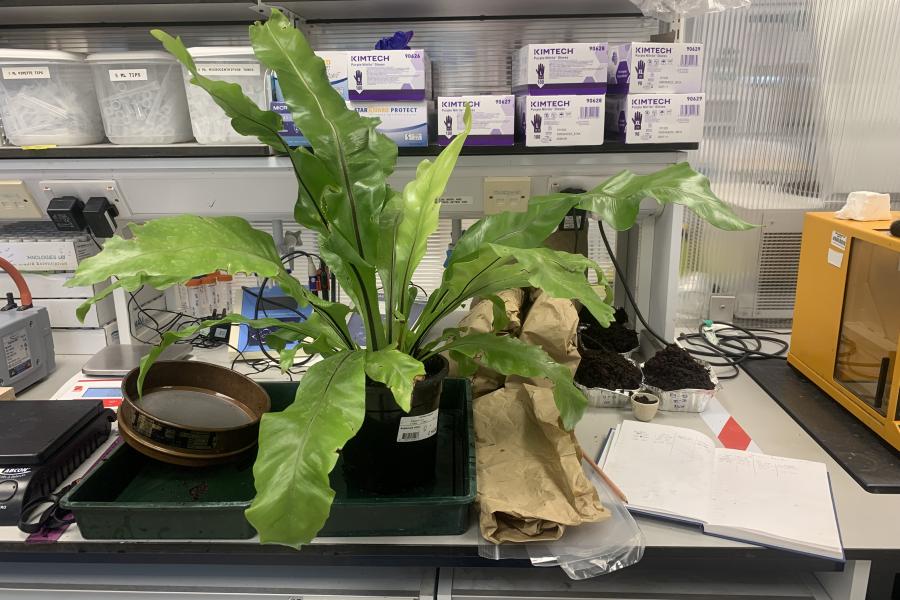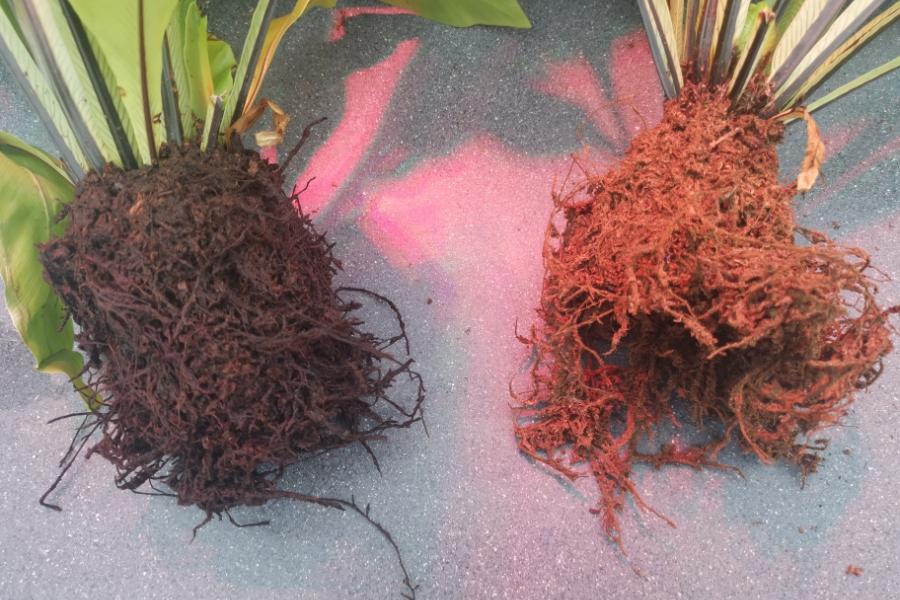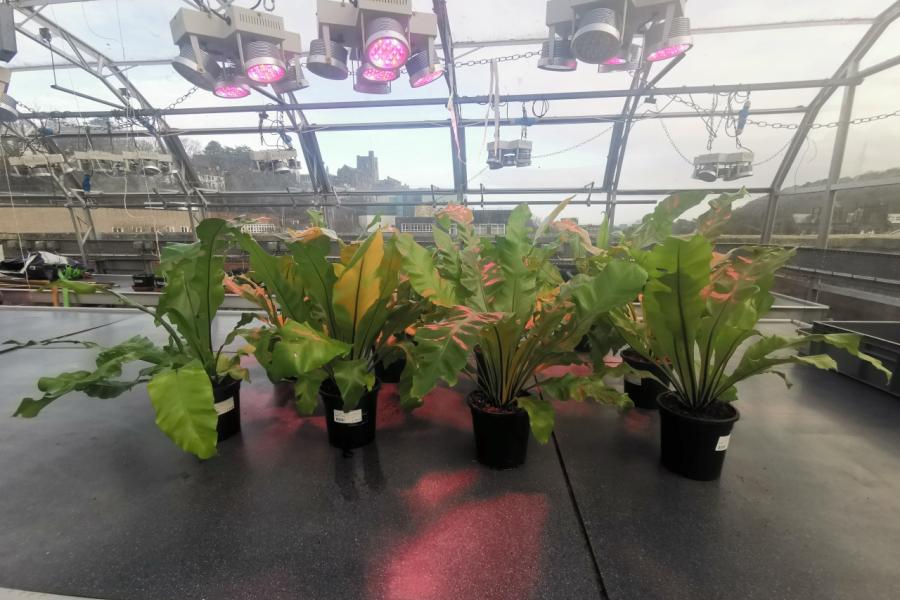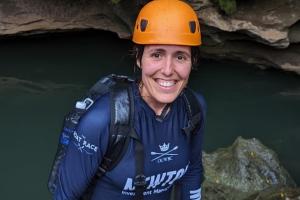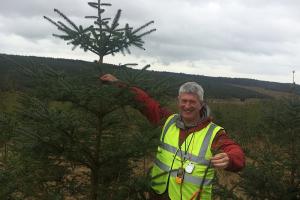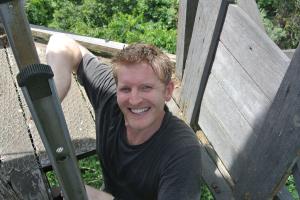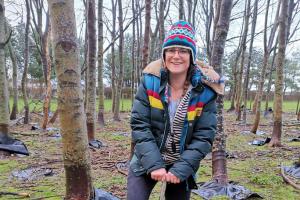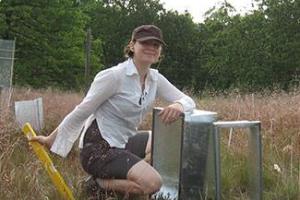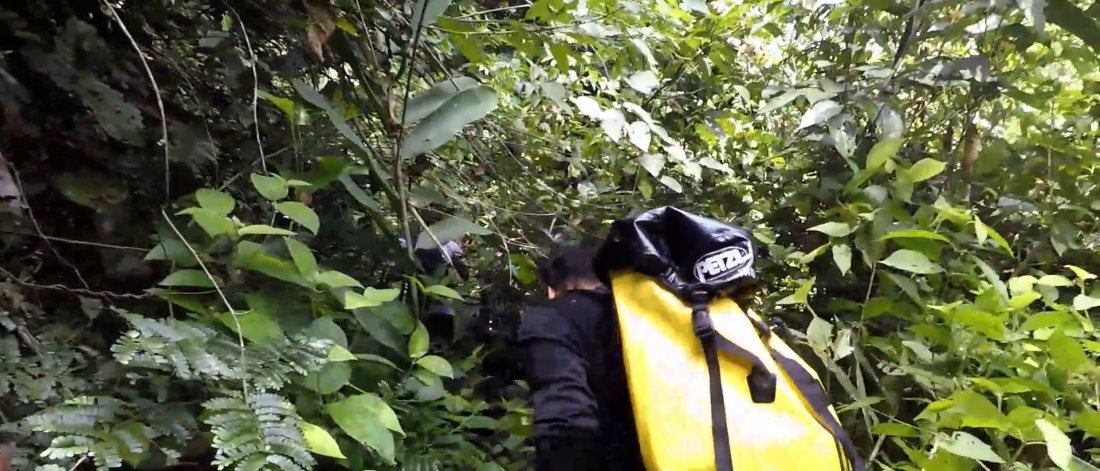Palm oil is the most widely consumed vegetable oil on Earth and expanding oil palm (Elaies guineensis) plantations are a major contributor to the global biodiversity crisis. As the fastest growing crop, oil palm occupied ~28 Mha worldwide in 2023, and 82% of this agricultural land was in Southeast Asia.
When tropical forests are converted into oil palm plantations, the removal of aboveground vegetation reduces structural complexity and ecosystem function. As plantations mature their canopies close and they become more suitable for ecological interventions to restore some biodiversity and ecosystem health. This project provides an exciting opportunity to investigate strategies to increase biodiversity in plantations in Borneo and participate in the development of government policies and management practices with Sabah Forestry Department and Roundtable on Sustainable Palm Oil (RSPO) certification. We will build on existing research to investigate whether the bird’s nest fern (Asplenium nidus) can be used as a conservation tool for improving biodiversity and nutrient cycling within oil palm plantations.
Project Partners
Project background
As the world’s largest epiphytes, bird’s nest ferns are keystone species, reaching 200kg in the forest canopies of Borneo. These ferns capture fallen leaf litter, developing large quantities of 'suspended soils', creating an entire microcosm of fungi, microbes and invertebrates. It is estimated that the suspended soils associated with the ferns support enough invertebrates to double the estimate of the invertebrate biomass of an entire rainforest canopy. If we could link the fern’s internal and external biogeochemical processes, we could use them as a silver bullet to restore ecosystem function throughout millions of hectares of degraded oil palm landscapes.
Through this project, we hope to determine whether the inclusion of bird’s nest ferns within oil palm plantations benefits oil palm health, providing a win-win for conservation by sustainably increasing oil palm productivity whilst at the same time providing refuges for biodiversity. We want to investigate whether fern leachate creates a hotspot of biodiversity and nutrient cycling within and beneath the fern. This will help confirm whether the ferns restore soil biodiversity and ecosystem function in addition to improving palm health.
Previous studies have shown that A. nidus are adapted to withstand extremes in climate and nutrient availability, and the ferns can reach higher abundances in oil palm plantations than in rainforest habitats. Research on the biodiversity and ecosystem function of the bird’s nest fern microcosm has revealed that its suspended soils include enough invertebrates to double the estimate of the invertebrate biomass of an entire rainforest canopy.
We will develop this research area to establish whether the presence of ferns can benefit the soils, as well as invertebrate communities, in plantations and investigate whether the addition of ferns can improve palm oil yield.
We are preparing for our fieldtrip to Borneo in collaboration with Arthur Chung, Deputy Head (Research and Publication) at Forest Research Centre, Sepilok. During this trip we will identify study sites, install equipment and collect samples. We will update this webpage as the project advances, so check back to see our progress.
Our aims are to:
- Assess the biogeochemistry of A. nidus suspended soils, leachate, and ground soil
- Determine if ground soil nutrient cycling and biodiversity is improved, thereby enhancing ecosystem functionality in plantations
Ultimately, we want to change the policy and practice of oil palm production by obtaining data to support the RSPO in stipulating the introduction of A. nidus into plantations, and thus influence government policies and management practices around the world.
Small worlds solve big problems
A team have been testing a portable and gas-tight enclosure that could be used under challenging tropical forest research conditions, to undertake manipulative experiments and investigate the gaseous emissions of carbon dioxide (CO2) and nitrous oxide (N2O) from these miniature ecosystems. This pilot project was funded by the Higher Education Funding Council Wales (HEFCW) and the project team included researchers at Bangor University (Dr Kara Marsden, Dr Will Schneider and Dr Farnon Ellwood) and Cardiff University (Dr Tom Bishop).
The team modified vacuum bags to have an inlet, outlet and septa to allow for gas sampling and tested the suitability of the materials for gas flux monitoring. Further, they conducted a pilot study to quantify CO2 and N2O fluxes using a portable CO2/N2O analyser (Aeris MIRA Ultra N2O/CO2 analyser). The enclosure bag materials did not consume either CO2 or N2O over the monitoring periods and maintained steady concentrations under recirculating conditions. The pilot study demonstrated a small but quantifiable positive flux of N2O from the ferns with soil, but fluxes were below the limit of detection after being root-washed. A positive flux of CO2 from fern microcosms under dark conditions, due to respiration, was observed. After root washing and removing soil, the respiration rate remained similar between wetting and drying treatments. However, under a desiccating treatment, the net ecosystem exchange and gross primary productivity had almost halved by the end of the experiment, indicating water-stress by the plants undergoing desiccation.
Meet the team
Watch video: The Highs and Lows of Rainforest Research
[00:00] Video Title: The Highs and Lows of Rainforest Research appears on the screen and fast-paced music plays in the background throughout the video.
[00:02] A researcher climbing an emergent tree in the rainforest canopy
[00:04] A van driving along a track through the rainforest
[00:05] The entrance to Danum Valley Field Centre
[00:08] Two students walking through secondary rainforest
[00:13] A student walking through primary rainforest
[00:16] A student walking through secondary rainforest
[00:19] Sunlight through the canopy leaves
[00:21] A climbing guide checking a harness is appropriately fastened
[00:24] A student beginning to climb into the tree canopy
[00:26] Two students standing on a rope bridge across a river
[00:30] Two students using a ladder to collect an epiphytic fern from a tree
[00:34] A researcher climbing up a tree
[00:42] A view of the rainforest during a downpour
[00:45] Three students cutting down an epiphytic fern using a machete
[00:48] Researchers catapulting climbing ropes into the canopy
[00:50] Two students in the rainforest during a downpour
[00:51] Researchers setting up data collecting equipment in the rainforest canopy
[00:54] A researcher using a ladder to collect an epiphytic fern
[00:58] A student walking through the rainforest
[01:01] Researchers setting up data collecting equipment in the rainforest canopy
[01:04] Three students walking through the rainforest
[01:07] Sunlight through the canopy leaves
[01:12] A bird’s nest fern, Asplenium Nidus, in the rainforest canopy
[01:15] A misty aerial video of the rainforest, with a monkey jumping into the trees
[01:18] Researchers testing soil from the epiphytic ferns
[01:23] Researchers preparing to climb in the rainforest
[01:25] A bird’s nest fern, Asplenium Nidus, in the rainforest canopy
[01:27] A researcher collecting an epiphytic fern from an oil palm tree
[01:31] A centipede crawling across a leaf
[01:32] Two students using a ladder to collect an epiphytic fern from a tree
[01:35] A bird’s nest fern, Asplenium Nidus, in the rainforest canopy
[01:39] Researchers setting up data collecting equipment in the rainforest canopy
[01:42] Researchers walking through an oil palm plantation
[01:45] A researcher attaching a bird’s nest fern, Asplenium Nidus, to a tree in the rainforest
[01:48] Oil palm trees in a plantation in Borneo
[01:49] A student taking a photo of a bird’s nest fern, Asplenium Nidus, in the rainforest canopy
[01:52] A researcher walking along a road through an oil palm plantation
[01:55] A rope bridge crossing over a river in the rainforest
[01:57] A researcher ascending into a tree canopy using ropes
[02:00] Drone footage of a truck driving along a road on the edge of an oil palm plantation
[02:03] Researchers catapulting climbing ropes into the canopy
[02:07] Researchers in the canopy of the Danum Valley rainforest
[02:14] A bird’s nest fern, Asplenium Nidus, in a mesh bag so it can be sampled
[02:17] Researchers walking through the rainforest
[02:19] Climbing ropes used to access the rainforest canopy
[02:23] Researchers setting up data collecting equipment in the rainforest canopy
[02:27] Drone footage of a truck driving along a road through the rainforest
[02:30] Researchers walking through an oil palm plantation
[02:33] The canopy trees of the Danum Valley rainforest
[02:34] Students in the rainforest during data collection
[02:27] Drone footage of a truck parked along a road on the edge of an oil palm plantation
[02:41] Students in the rainforest during data collection
[02:45] Researchers using rope climbing to access the rainforest canopy
[02:47] A bird’s nest fern, Asplenium Nidus, in a mesh bag so it can be sampled
[02:52] A student holding a beetle for identification
[02:54] An aerial view of Danum Valley Field Centre
[02:57] Researchers discussing research in an oil palm plantation
[03:00] Climbing ropes used to access the rainforest canopy
[03:04] A professor showing a student the roots of an epiphytic fern
[03:08] A student examining canopy leaves in a rainforest
[03:14] Oil palm trees in a plantation in Borneo
[03:15] A rope bridge crossing over a river in the rainforest
[03:19] A student examining canopy leaves in a rainforest
[03:25] Drone footage of an aerial view of an oil palm plantation
[03:33] Oil palm trees in a plantation in Borneo
[03:34] A student undertaking soil analysis in a laboratory at the field centre
[03:38] Researchers collecting soil for analysis
[03:46] A student collecting data in the Danum Valley rainforest

